#nasamoonsnap
Explore tagged Tumblr posts
Text
How do astronauts stay warm? They always bring a space heater.
NASA socks at GoodLuckSock.com
#nasa mars#nasas#nasa#nasamoonsnap#astronomy#outer space#planets#space#astronaut#space art#space suit#space socks#socks#novelty socks#novelty sock#good luck socks#sock shop#crazy socks#fun socks#sock design
0 notes
Text
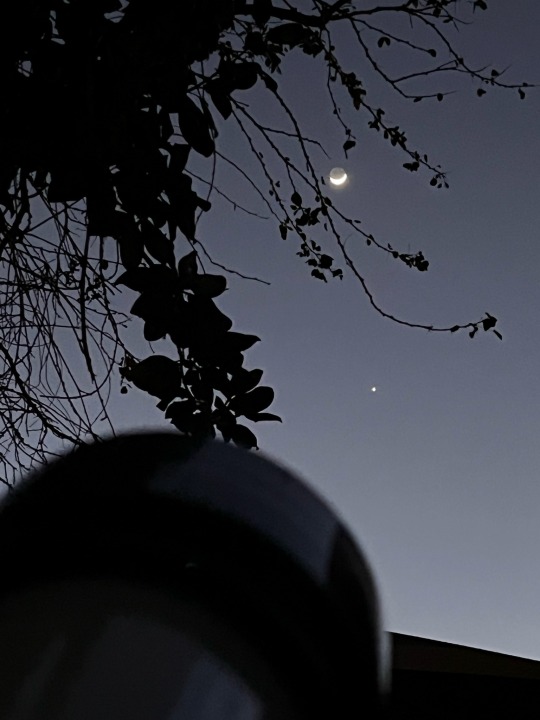
Caught a #WaxingCrescent🌙 playing with Venus⚪️ in my backyard.
#NASAMoonSnap
6 notes
·
View notes
Text
The Artemis I Mission: To the Moon and Back
The Artemis I mission was the first integrated test of the Orion spacecraft, the Space Launch System (SLS) rocket, and Exploration Ground Systems at NASA’s Kennedy Space Center in Florida. We’ll use these deep space exploration systems on future Artemis missions to send astronauts to the Moon and prepare for our next giant leap: sending the first humans to Mars.
Take a visual journey through the mission, starting from launch, to lunar orbit, to splashdown.
Liftoff

The SLS rocket carrying the Orion spacecraft launched on Nov. 16, 2022, from Launch Complex 39B at NASA’s Kennedy Space Center in Florida. The world’s most powerful rocket performed with precision, meeting or exceeding all expectations during its debut launch on Artemis I.
"This is Your Moment"

Following the successful launch of Artemis I, Launch Director Charlie Blackwell-Thompson congratulates the launch team.
“The harder the climb, the better the view,” she said. “We showed the space coast tonight what a beautiful view it is.”
That's Us

On Orion’s first day of flight, a camera on the tip of one of Orion’s solar arrays captured this image of Earth.
Inside Orion
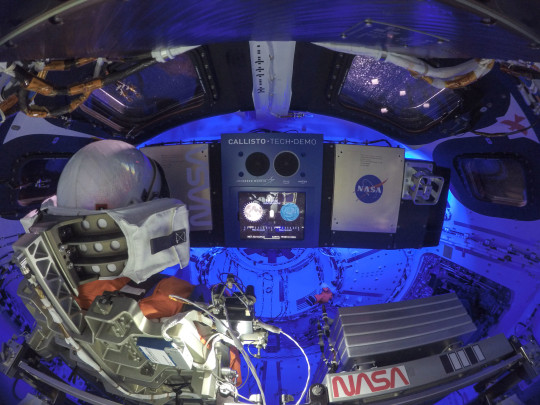
On the third day of the mission, Artemis I engineers activated the Callisto payload, a technology demonstration developed by Lockheed Martin, Amazon, and Cisco that tested a digital voice assistant and video conferencing capabilities in a deep space environment. In the image, Commander Moonikin Campos occupies the commander’s seat inside the spacecraft. The Moonikin is wearing an Orion Crew Survival System suit, the same spacesuit that Artemis astronauts will use during launch, entry, and other dynamic phases of their missions. Campos is also equipped with sensors that recorded acceleration and vibration data throughout the mission that will help NASA protect astronauts during Artemis II. The Moonikin was one of three “passengers” that flew aboard Orion. Two female-bodied model human torsos, called phantoms, were aboard. Zohar and Helga, named by the Israel Space Agency (ISA) and the German Aerospace Center (DLR) respectively, supported the Matroshka AstroRad Radiation Experiment (MARE), an experiment to provide data on radiation levels during lunar missions. Snoopy, wearing a mock orange spacesuit, also can be seen floating in the background. The character served as the zero-gravity indicator during the mission, providing a visual signifier that Orion is in space.
Far Side of the Moon
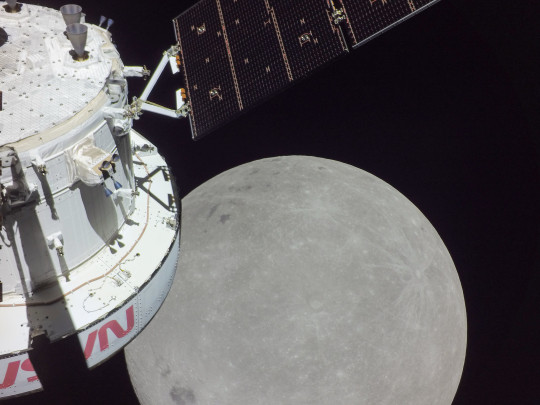
A portion of the far side of the Moon looms large in this image taken by a camera on the tip of one of Orion’s solar arrays on the sixth day of the mission.
First Close Approach

The Orion spacecraft captured some of the closest photos of the Moon from a spacecraft built for humans since the Apollo era — about 80 miles (128 km) above the lunar surface. This photo was taken using Orion’s optical navigational system, which captures black-and-white images of the Earth and Moon in different phases and distances.
Distant Retrograde Orbit
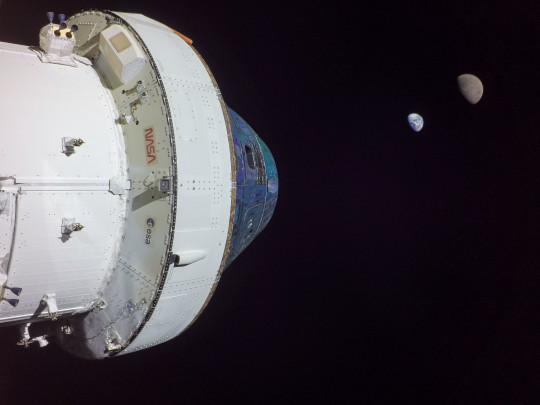
Orion entered a distant retrograde orbit around the Moon almost two weeks into the mission. The orbit is “distant” in the sense that it’s at a high altitude approximately 50,000 miles (80,467 km) from the surface of the Moon. Orion broke the record for farthest distance of a spacecraft designed to carry humans to deep space and safely return them to Earth, reaching a maximum distance of 268,563 miles (432,210 km).
Second Close Approach

On the 20th day of the mission, the spacecraft made its second and final close approach to the Moon flying 79.2 miles (127.5 km) above the lunar surface to harness the Moon’s gravity and accelerate for the journey back to Earth.
Cameras mounted on the crew module of the Orion spacecraft captured these views of the Moon’s surface before its return powered flyby burn.
Heading Home

After passing behind the far side of the Moon on Flight Day 20, Orion powered a flyby burn that lasted approximately 3 minutes and 27 seconds to head home. Shortly after the burn was complete, the Orion spacecraft captured these views of the Moon and Earth, which appears as a distant crescent.
Parachutes Deployed
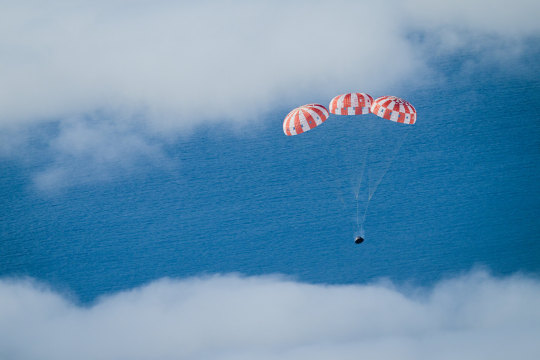
Prior to entering the Earth’s atmosphere, Orion’s crew module separated from its service module, which is the propulsive powerhouse provided by ESA (European Space Agency). During re-entry, Orion endured temperatures about half as hot as the surface of the Sun at about 5,000 degrees Fahrenheit (2,760 degrees Celsius). Within about 20 minutes, Orion slowed from nearly 25,000 mph (40,236 kph) to about 20 mph (32 kph) for its parachute-assisted splashdown.
Splashdown

On Dec. 11, the Orion spacecraft splashed down in the Pacific Ocean off the coast of California after traveling 1.4 million miles (2.3 million km) over a total of 25.5 days in space. Teams are in the process of returning Orion to Kennedy Space Center in Florida. Once at Kennedy, teams will open the hatch and unload several payloads, including Commander Moonikin Campos, the space biology experiments, Snoopy, and the official flight kit. Next, the capsule and its heat shield will undergo testing and analysis over the course of several months.
Make sure to follow us on Tumblr for your regular dose of space!
#Artemis#LunarMission#SpaceLaunchSystem#Rocket#Space#MegaMoonRocket#Moon#Spacecraft#Orion#NASAMoonSnap#Moonikin#Earth#LunarOrbit#Splashdown#Launch
2K notes
·
View notes
Text
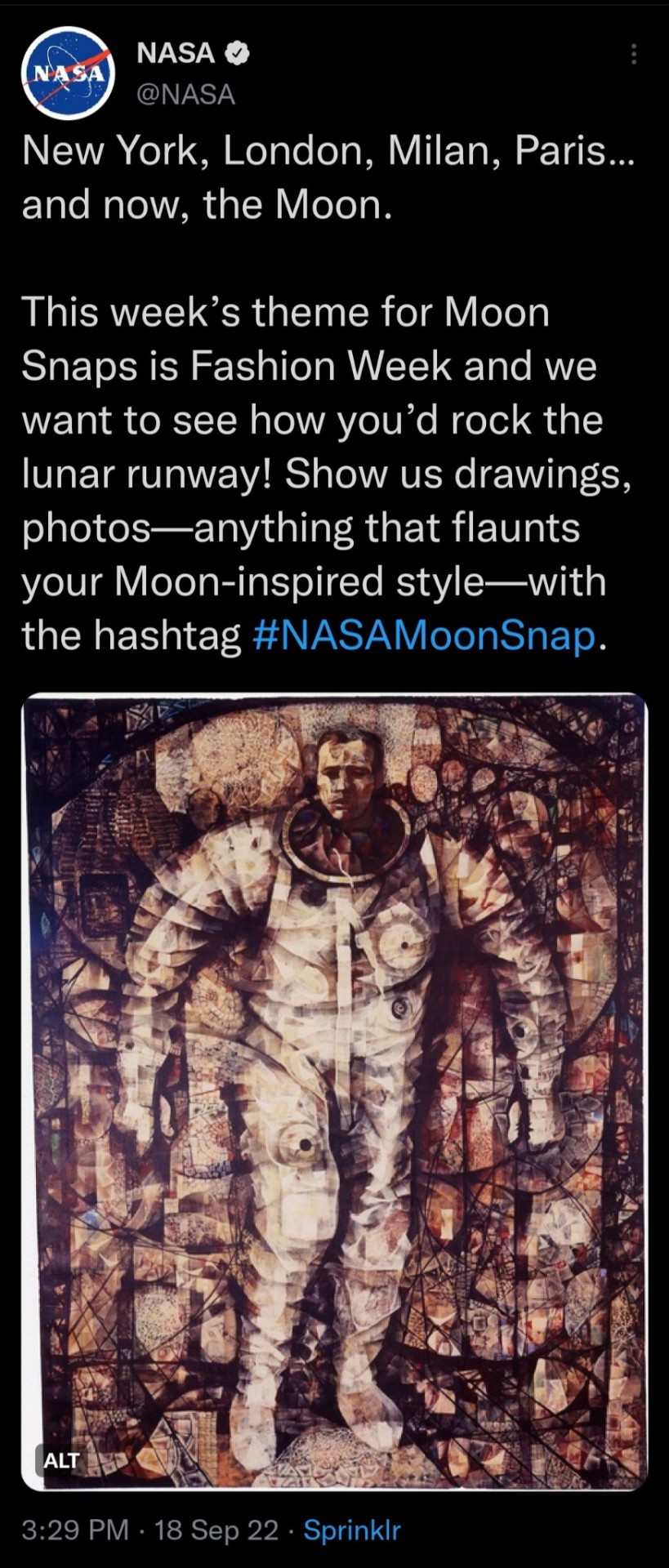
3 notes
·
View notes
Text
Took these pictures in July, don’t know if they count
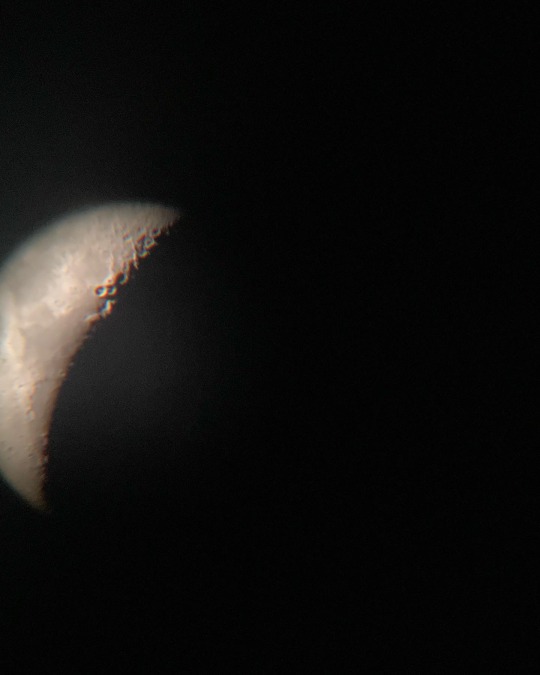
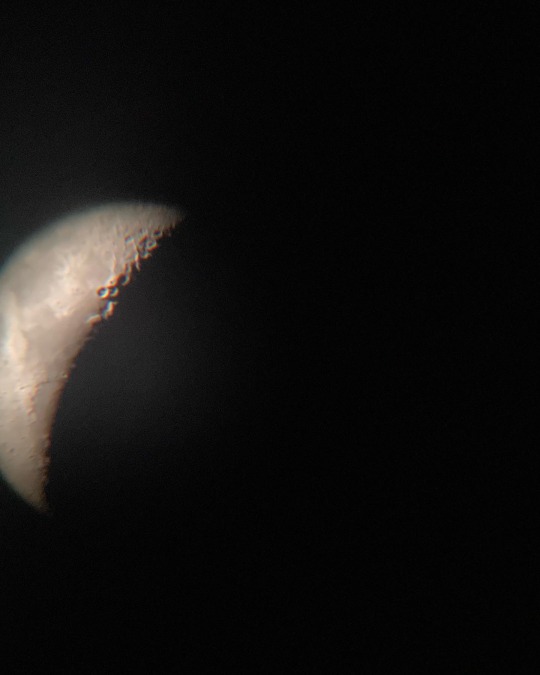


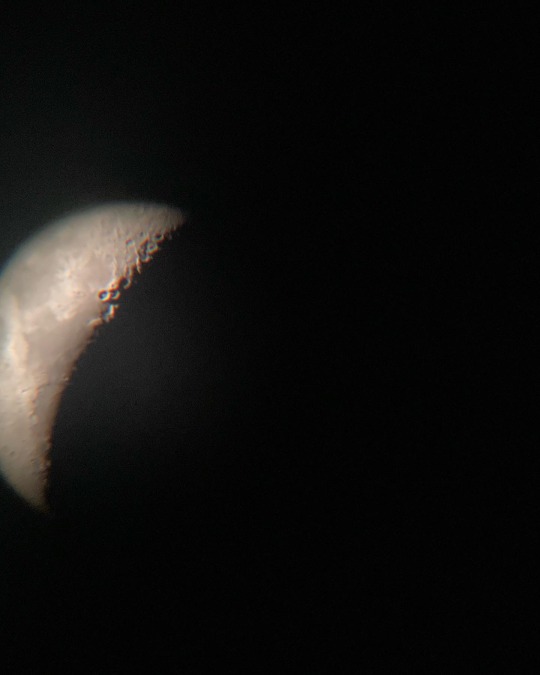
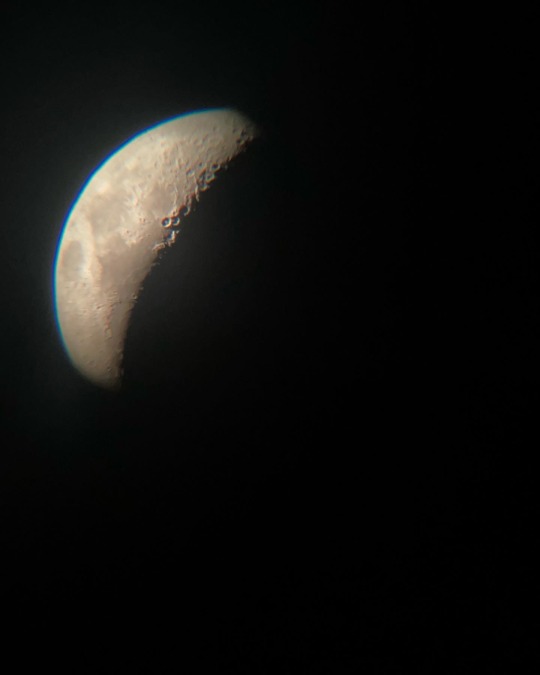



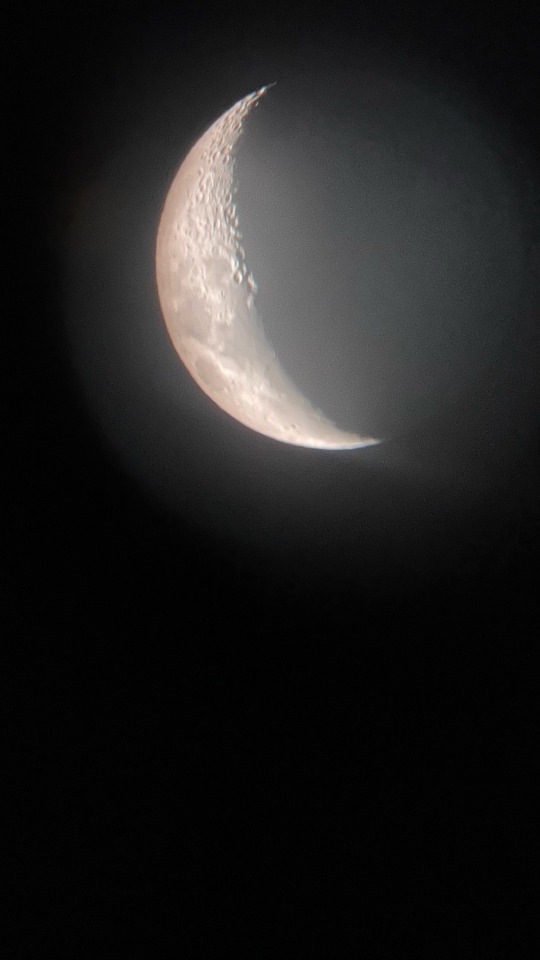
1 note
·
View note
Photo

It’s cloudy here (ofc) but here’s a throwback Moon from 11/08/2020. Only 17 days until we begin our return. #NASAMoonSnap #WeAreGoing #Artemis https://www.instagram.com/p/ChJevpyurVk/?igshid=NGJjMDIxMWI=
0 notes
Photo
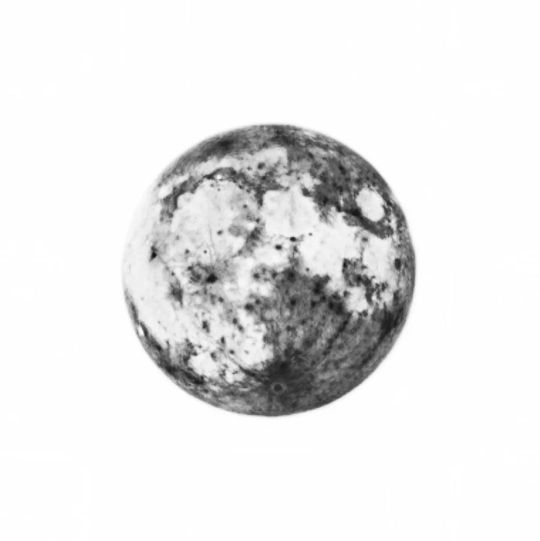
#NASAMoonSnap #moon #fullmoon #moonphotography #astrophotography #inverted #invertedcolors #invertedphotography #night #nightsky #nightphotography #blackandwhite #blackandwhitephotography #mobilephotography #phonephotography #zoomphotography #withgalaxy #GalaxyS22Ultra #instacraiova https://www.instagram.com/p/ChIg45xjcy_/?igshid=NGJjMDIxMWI=
#nasamoonsnap#moon#fullmoon#moonphotography#astrophotography#inverted#invertedcolors#invertedphotography#night#nightsky#nightphotography#blackandwhite#blackandwhitephotography#mobilephotography#phonephotography#zoomphotography#withgalaxy#galaxys22ultra#instacraiova
0 notes
Photo
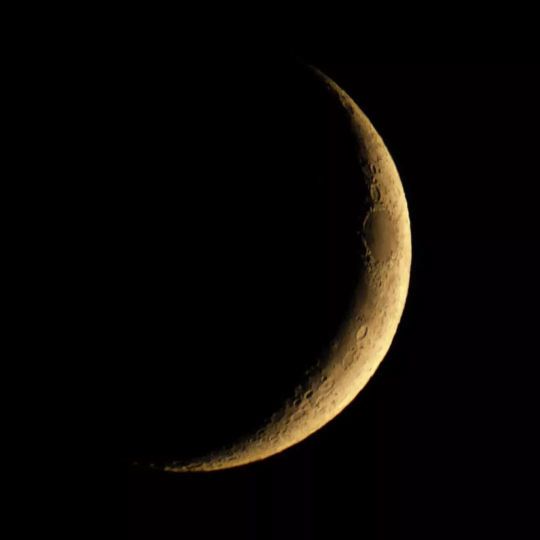
#NASAMoonSnap https://www.instagram.com/p/ChBJJUwrSF3/?igshid=NGJjMDIxMWI=
0 notes
Photo
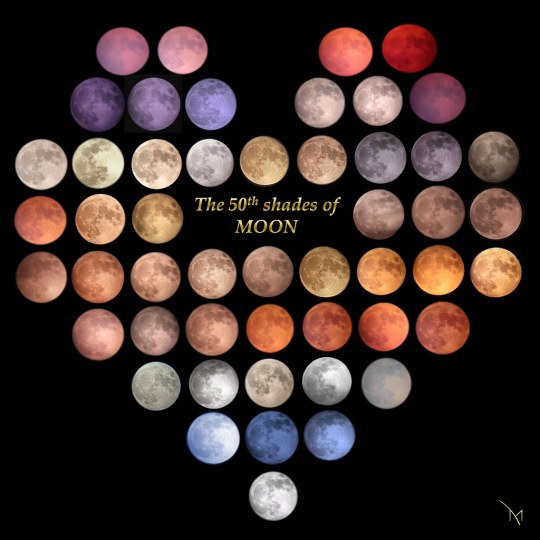
The 50th Shades of Moon by Maria Lambropoulou by NASA Orion Spacecraft Thank you to Maria Lambropoulou for submitting "The 50th Shades of Moon" to our #NASAMoonSnap campaign! During the Artemis I mission, the Orion spacecraft's internal and external cameras will capture views of Earth and the Moon as it travels between the two. In anticipation of this monumental milestone, NASA wants to see, hear, and experience all of your Moon-inspired content — your Moon photographs, your Moon music, your Moon recipes, your Moon nail art, your Moon makeup tutorials. The sky is not the limit! https://flic.kr/p/2nLEXJs
38 notes
·
View notes
Text

Who needs a night light when you have the moon? #NASAMoonSnap
Snoopy
11 notes
·
View notes
Text
Moon Mosaic

This Moon-mosaic is comprised of 1,231 images taken by the Lunar Reconnaissance Orbiter's (LRO) Narrow-Angle Camera (NAC) in the summer of 2018. The LRO team chose each tile from over 10,000 of the highest quality LROC NAC frames by searching for the best match of brightness and gradient (the direction and size of the brightness change across the frame).
Since LRO's launch in 2009, the camera team has published over one million gigabytes of image data, all of which are available to the public. In anticipation of the upcoming Artemis I mission to the Moon, NASA is asking the public to share all of your Moon-inspired content - including but not limited to your Moon photographs, your Moon music, and your Moon nail art - with the hashtag #NASAMoonSnap. We will be sharing a variety of Moon Snaps on our social media accounts, on our website, and during the Artemis I launch broadcast.
Image Credit: NASA's Scientific Visualization Studio
LRO
Via the NASA app
0 notes
Text
Tweeted
#NASAMoonSnap #SpaceElevator or #MoonElevator #poster originally created for @ShootTheMoonDoc | https://t.co/DovJOEHxnP https://t.co/WB5MJqaKML
— Chop Shop Studio 🇺🇦 (@chopshopstore) Aug 8, 2022
0 notes
Text
Follow NASA’s Artemis I Moon Mission: Live Tracker, Latest Images, and Videos
youtube
On Nov. 16, 2022, the Artemis I mission officially began with the launch of the Orion spacecraft atop the Space Launch System rocket. The rocket and spacecraft lifted off from historic Launch Complex 39B at NASA’s Kennedy Space Center in Florida.
Now, the Orion spacecraft is about halfway through its journey around the Moon. Although the spacecraft is uncrewed, the Artemis I mission prepares us for future missions with astronauts, starting with Artemis II.
Stay up-to-date with the mission with the latest full-resolution images, mission updates, on-demand and live video.
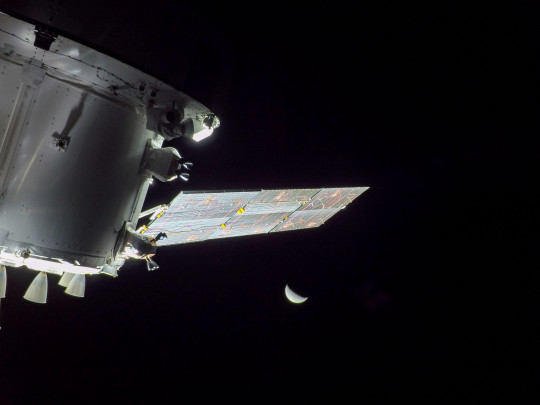
Imagery:
Find full-resolution images from the Orion spacecraft as they are released here.
Launch imagery can be found here. When Orion splashes down in the Pacific Ocean on Dec. 11, the images will be available here, as well!
youtube
Videos:
This playlist contains informational videos, as well as upcoming and past live events, about Artemis I.
You can watch a livestream of the Artemis I mission here. (Just a note: the livestream may cut off during moments when the Orion team needs higher bandwidth for activities.)
Keep yourself updated on the upcoming broadcasts of Artemis milestones with the NASA TV schedule.
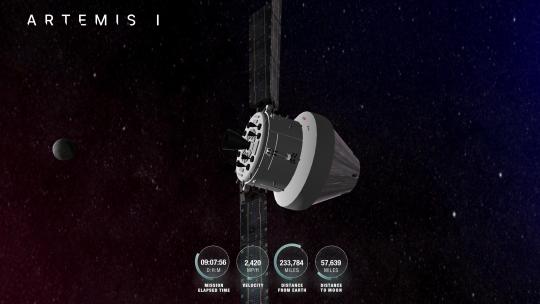
Trackers:
Our Artemis I Tracker uses live telemetry data streamed directly from Mission Control Center in Houston to show Orion position, attitude, solar array positions, and thruster firings throughout the mission.
“Eyes on the Solar System” shows Orion's position along the Artemis I trajectory and in relation to other NASA spacecraft and objects in the solar system.
“DSN Now” shows which antenna on Earth’s Deep Space Network is communicating with Orion.
youtube
Updates:
Read up on where Orion is and what’s next in the Artemis I mission with the Mission Blog.
Thank you so much for following with us on this historic mission. Go Artemis!
Make sure to follow us on Tumblr for your regular dose of space!
#nasa#space#moon#science#technology#artemis#nasamoonsnap#orion#megamoonrocket#sls#spacelaunchsystem#lunarmission#Youtube
1K notes
·
View notes
Text
Tweeted
#NASAMoonSnap The Moon block from our #Planetary Blocks set. Created for @exploreplanets | https://t.co/GHFRfCf0Ku https://t.co/XckmO6dQWs
— Chop Shop Studio 🇺🇦 (@chopshopstore) Aug 8, 2022
0 notes
Text
~ Jai Krishna Ponnappan.
Find Jai on Twitter | LinkedIn | Instagram
NASA Photographers Share Their #NASAMoonSnap
We’re getting ready to launch Artemis I, the first test flight of the rocket and spacecraft that will take future astronauts to the Moon! As we prepare for the lunar voyage of the Space Launch System (SLS) rocket and Orion spacecraft launching as early as Aug. 29, 2022, we would like you to share your excitement with us. Share all types of Moon-inspired content with us with the hashtag #NASAMoonSnap, and we will choose some entries to share on our social media platforms and during the launch broadcast. Get creative! We’re looking for Moon paintings, Moon poetry, Moon pottery, Moon latte foam art — the sky is not the limit.
Since we have the full Moon coming up on Aug. 11, we wanted to share our handy dandy Moon photography guide and inspire you with some of our NASA imagery experts’ stories on capturing the Moon.

"The first rollout of the SLS rocket with the Orion spacecraft aboard was a really exciting moment to capture. I was photographing at Kennedy Space Center in an area where many of the employees that had worked on different parts of the SLS were watching. It was so great to hear some of their stories and see their pride in helping to build this amazing rocket and spacecraft. Once the mobile launcher with SLS passed the crowds to head toward the launchpad, people began to line up in their cars to leave. I decided to stick around and try to get a closer image of the Moon with SLS. It was fairly dark by the time I made this image, so there isn’t any detail in the moon, but it’s still moving to see them next to one another and know that SLS will be closer to the Moon than Earth very soon, and will one day enable humans to land on the lunar surface again!" — Aubrey Gemignani, NASA contract Photo Archivist/Photographer, NASA Headquarters
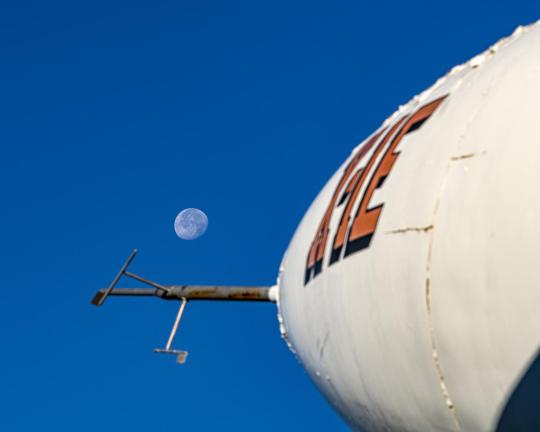
“I set up this shot when I saw the Moon was lined up perfectly with the X-1E in front of the main entrance to Armstrong Flight Research Center one morning last year. What captured my eye about this scene was that it showcased the past and the future of NASA in one image. The X-1 was a key piece of early NACA/NASA history, and it is pointing to the Moon showing us where we are going next with Artemis. I still remember walking around on my first day at NASA and seeing all the places where history was made. I was in awe as I walked these hallowed grounds. I know that there is still a great deal of history to be written here as we strive to go higher, further and faster and I’m glad that I get to be here to document it.” — Joshua Fisher, Photographer, NASA’s Armstrong Flight Research Center
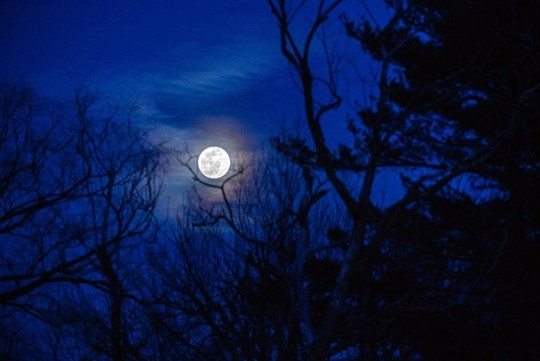
“While out capturing images of the Moon, the memories of my first day as a photographer for NASA came flooding back. One of my first memories is going to the exhibits department and getting to hold an actual Moon rock sample. That day changed my perception of the Moon forever. That moment made the Moon more than just something in the sky. It became tangible and real, and my part in all of this became clear. The honor and privilege I feel everyday is overwhelming.” — Jef Janis, Still Imaging Specialist, NASA’s Glenn Research Center
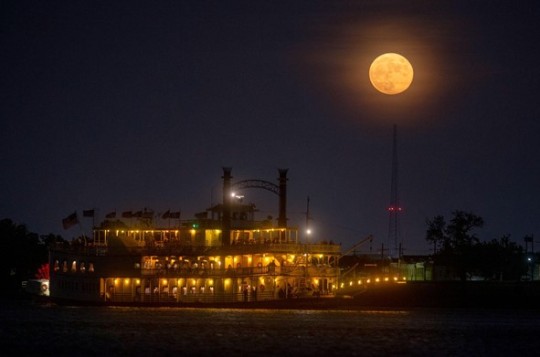
“When I can, I like my Moon photos to have a sense of place. The trick is finding a shooting position and a landmark that will fit in with the Moon’s very stringent plans for rising. I went out to shoot the Sturgeon Moon, which was also a rare blue moon, last August. As I was shooting the moonrise from the riverbank in downtown New Orleans, I was lucky to have one of the city’s iconic riverboats turn a bend and head upriver to pass beneath the Moon. Happily the river was low and I was able to scramble down the high bank to reduce the vertical distance between the quickly rising moon and the slowly passing riverboat.” — Michael DeMocker, Photographer, NASA’s Michoud Assembly Facility
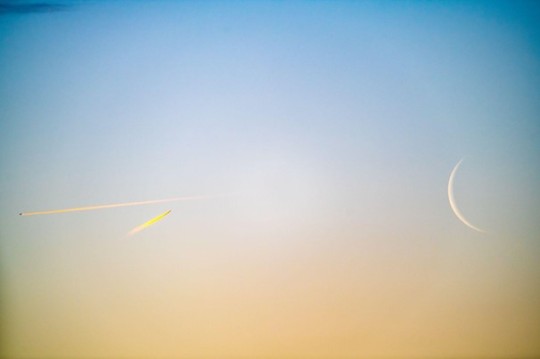
“I was excited to try to capture a waning crescent Moon at dawn, even though it was late February, 20 degrees Fahrenheit and 6:30 in the morning…Nonetheless, I decided to photograph on-site at Lewis Field, and ended up using my telephoto lens to really zoom in on the Moon. In a race against the sunrise and the Moon disappearing, I was able to capture a cool shot of the Moon with a couple planes making an appearance as well (The Cleveland Hopkins Airport is right next door). Although is it me, or does one of the planes look like a rocket taking off…?” — Jordan Salkin, Scientific Imaging Specialist, NASA’s Glenn Research Center
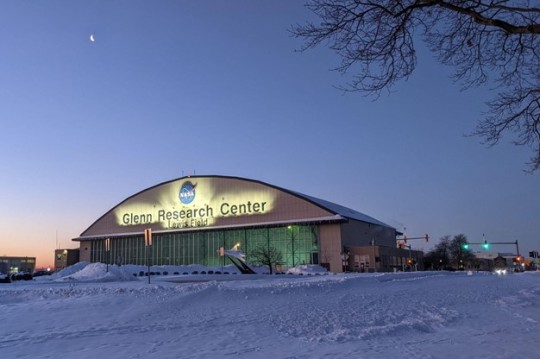
“I have worked at NASA’s Glenn Research Center since 1990 and have enjoyed every second doing what I do to support NASA’s mission. On my first day back to work onsite after 22 months of telework I saw this beautiful sunrise with the snow, the Moon, and the hangar. It felt good to be at work seeing the landscape I was so used to seeing. I had to take these pictures to share with my colleagues. ” — Jeffrey F. Abbott, Media Support Specialist, NASA’s Glenn Research Center
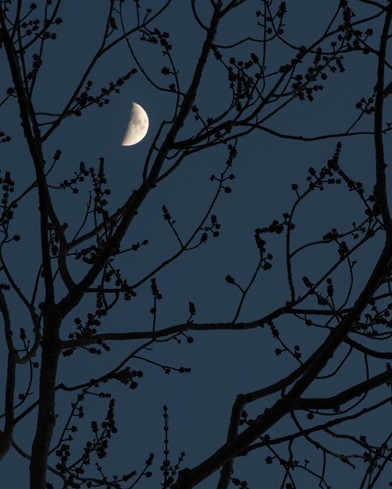
“In creating this Moon image, I almost felt pressured to find the ‘perfect location.’ The more that I thought about that prospect, the more I was drawn to using only natural elements, in my own environment. I wanted to find an image in my own backyard. This image was captured just as the Sun dropped below the horizon. I had a very short window of time when these colors would be possible. Two minutes earlier or later would have produced a totally different image. The almost abstract lines of a Maple tree in the earliest stages of budding seemed to be in concert with the waxing crescent Moon, both preparing for full bloom. Nature on display in its simplicity.” — Marvin Smith, Still Imaging Specialist Lead, NASA’s Glenn Research Center
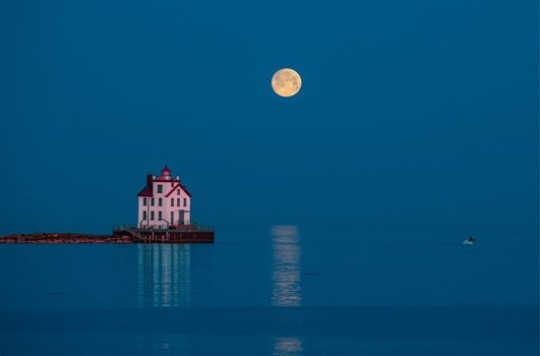
“The lighthouse in Lorain, Ohio, has been photographed by amateur and professional photographers for decades, but I have never photographed it before. When I calculated that the path of the Moon was going to go over and past the lighthouse with a reflection over the water, I decided to give it a try. I encountered four other photographers on the same pier with me that early morning. They were huddled in the middle of the pier and I was at the end. I think I got the best photo.” — Quentin Schwinn, Scientific Photographer, NASA’s Glenn Research Center
Make sure to follow us on Tumblr for your regular dose of space!
#nasamoonsnap#nasa moon mission#artemis#Space Launch System#SLS#orion spacecraft#photography#moon#nasa#usa
1K notes
·
View notes